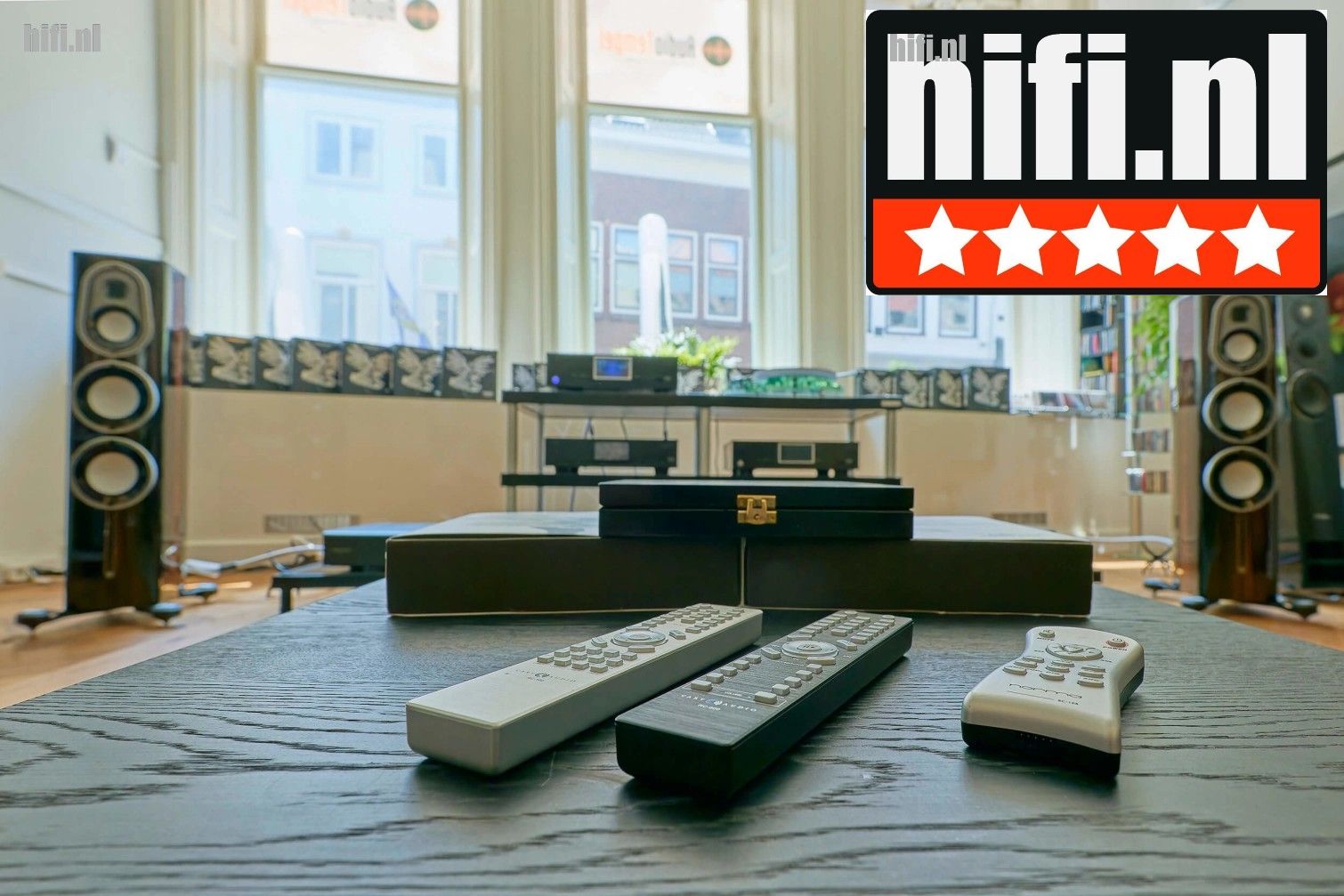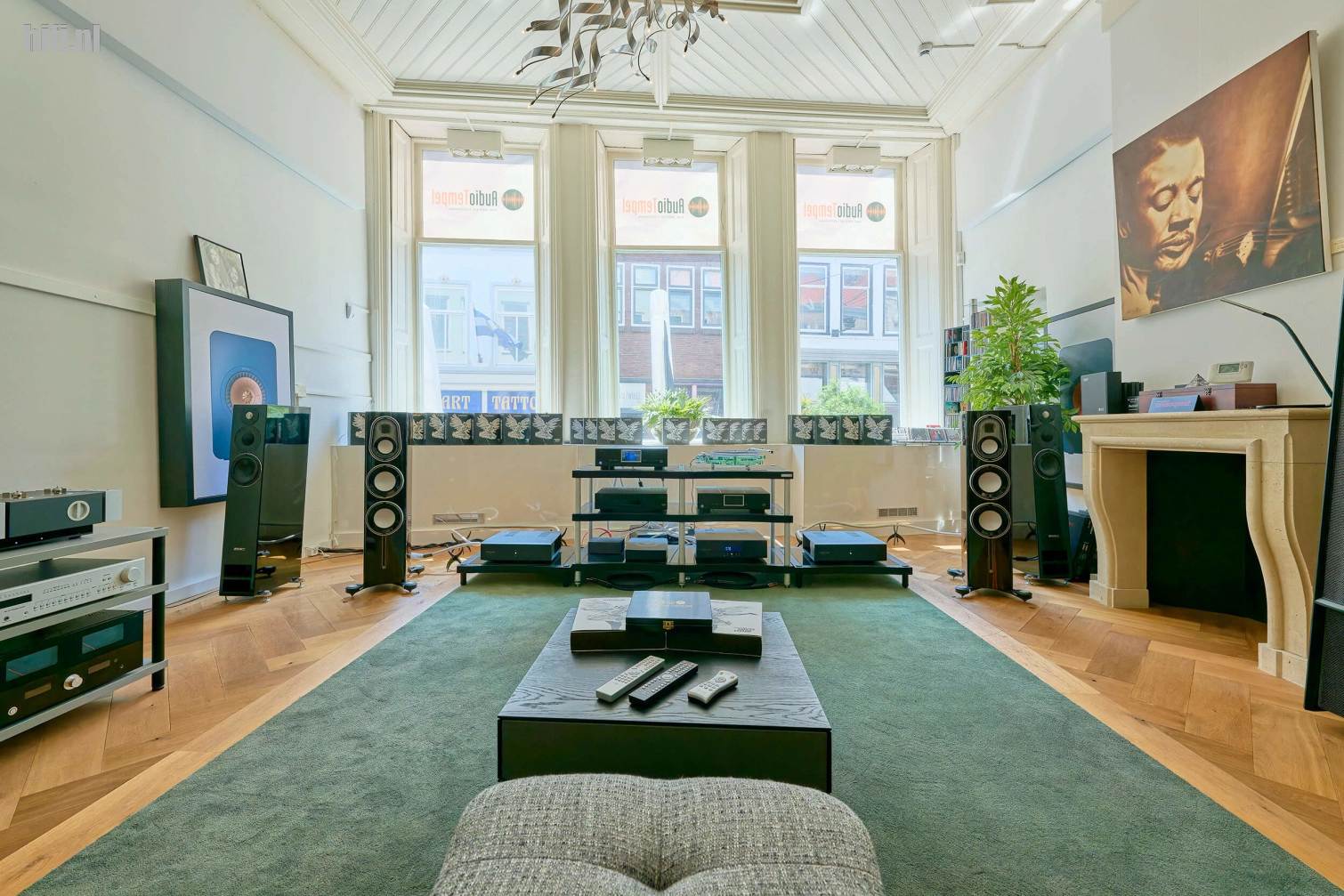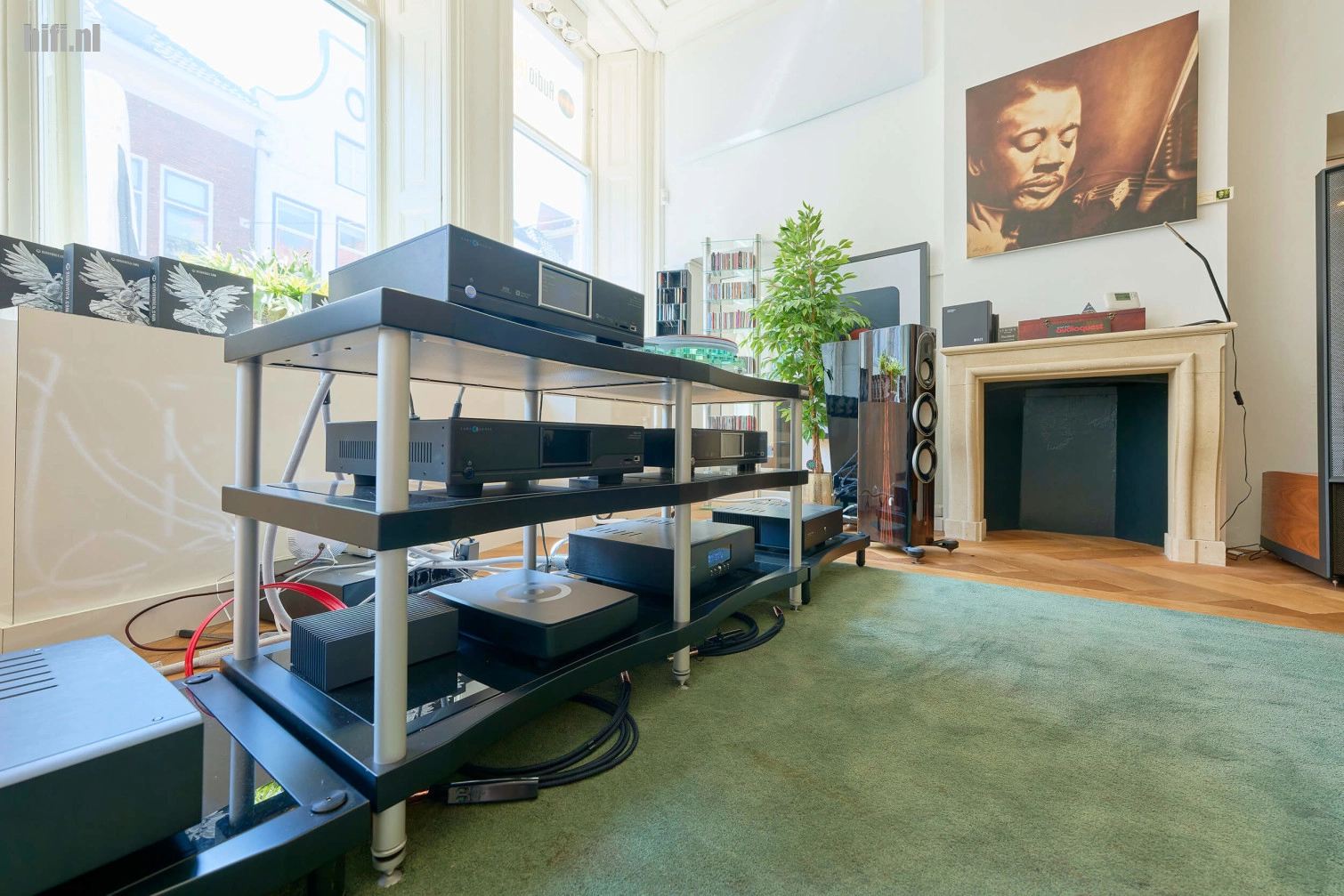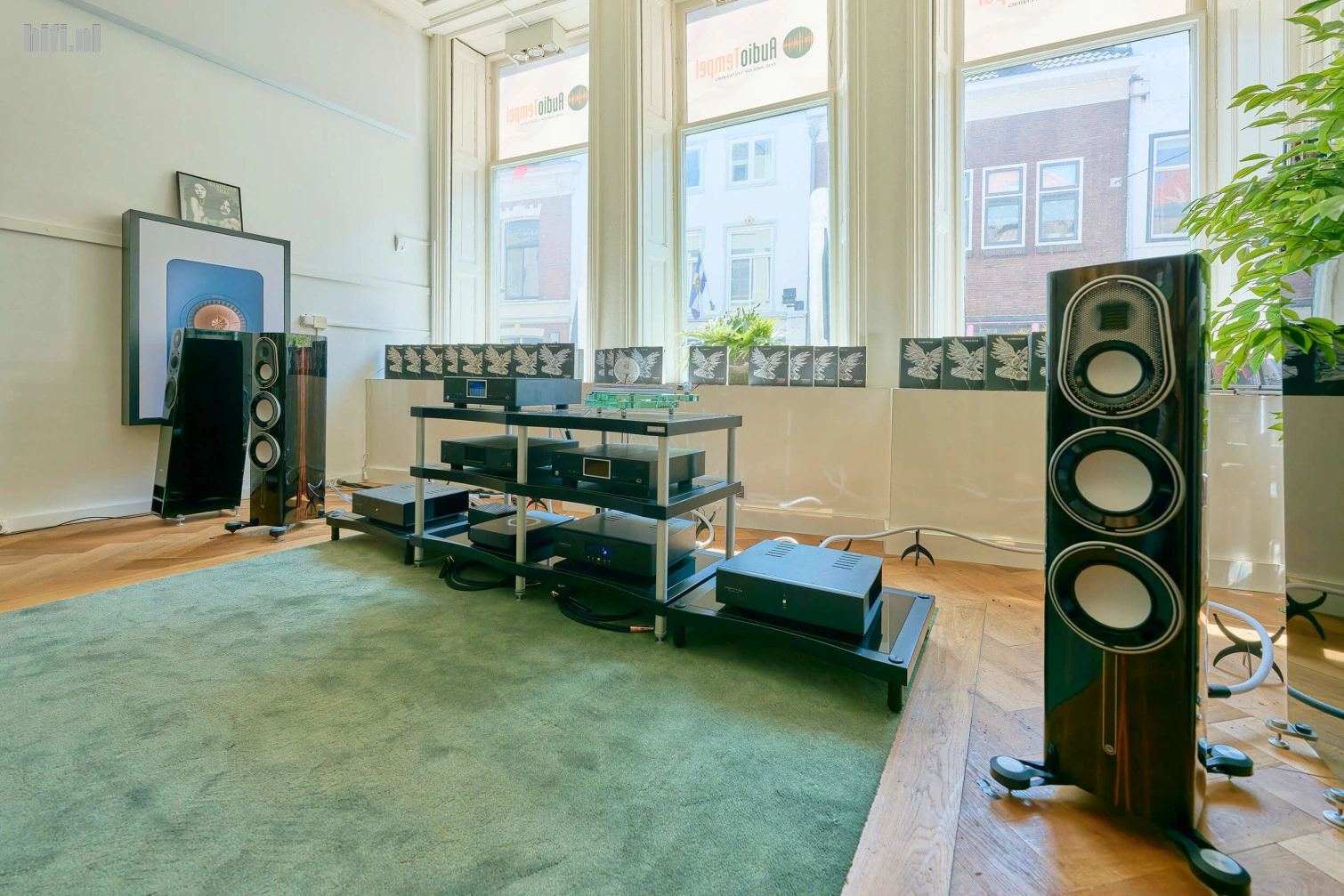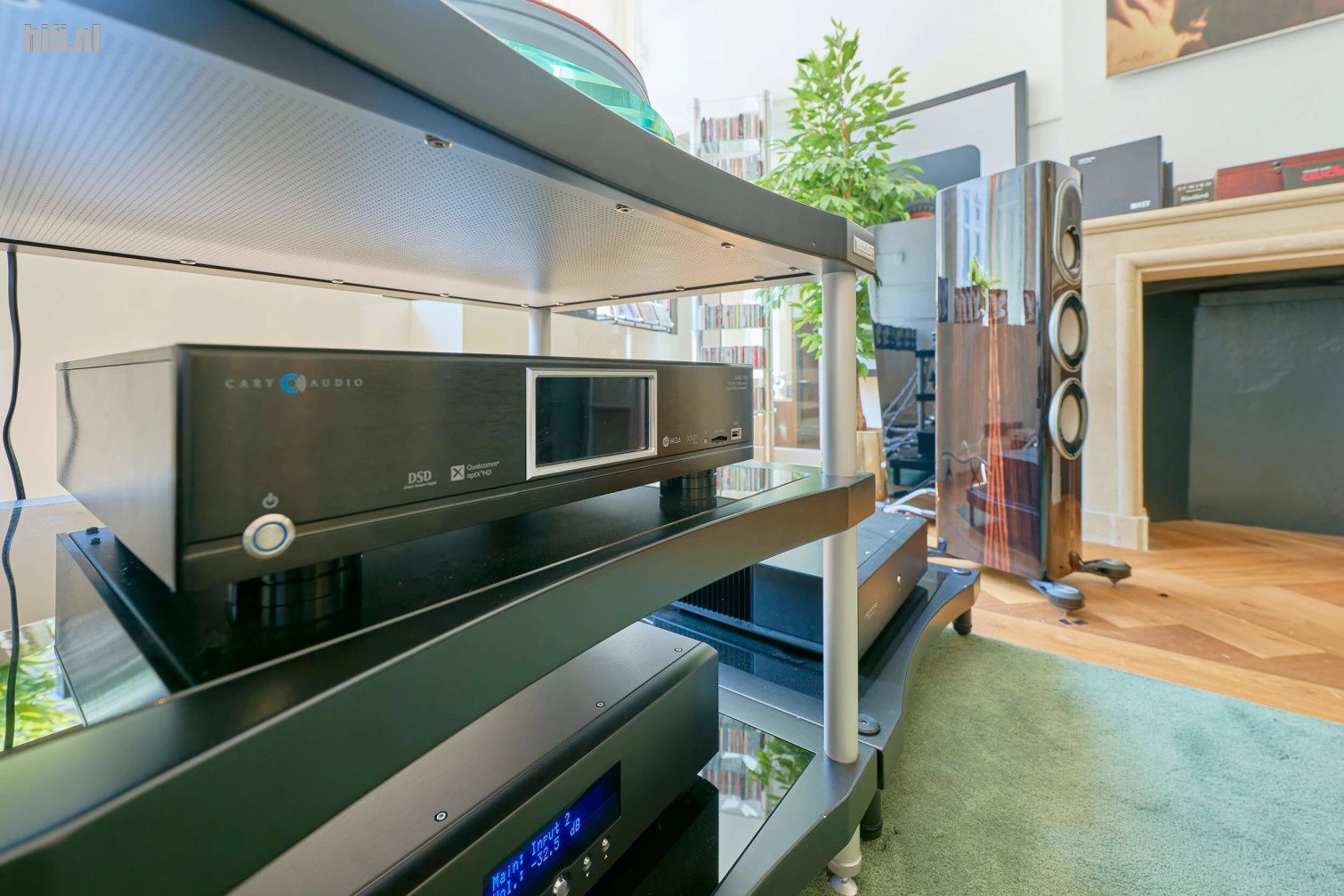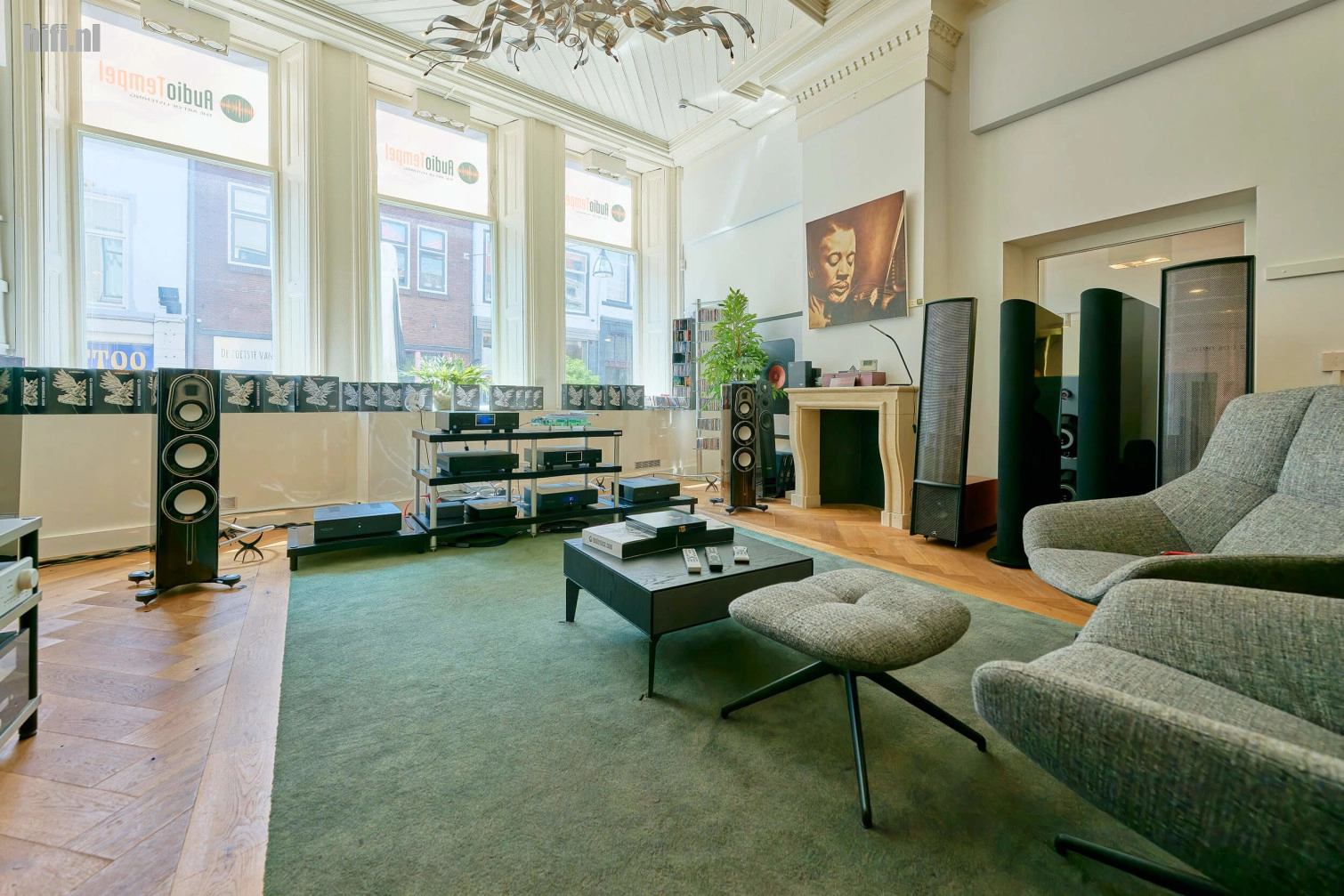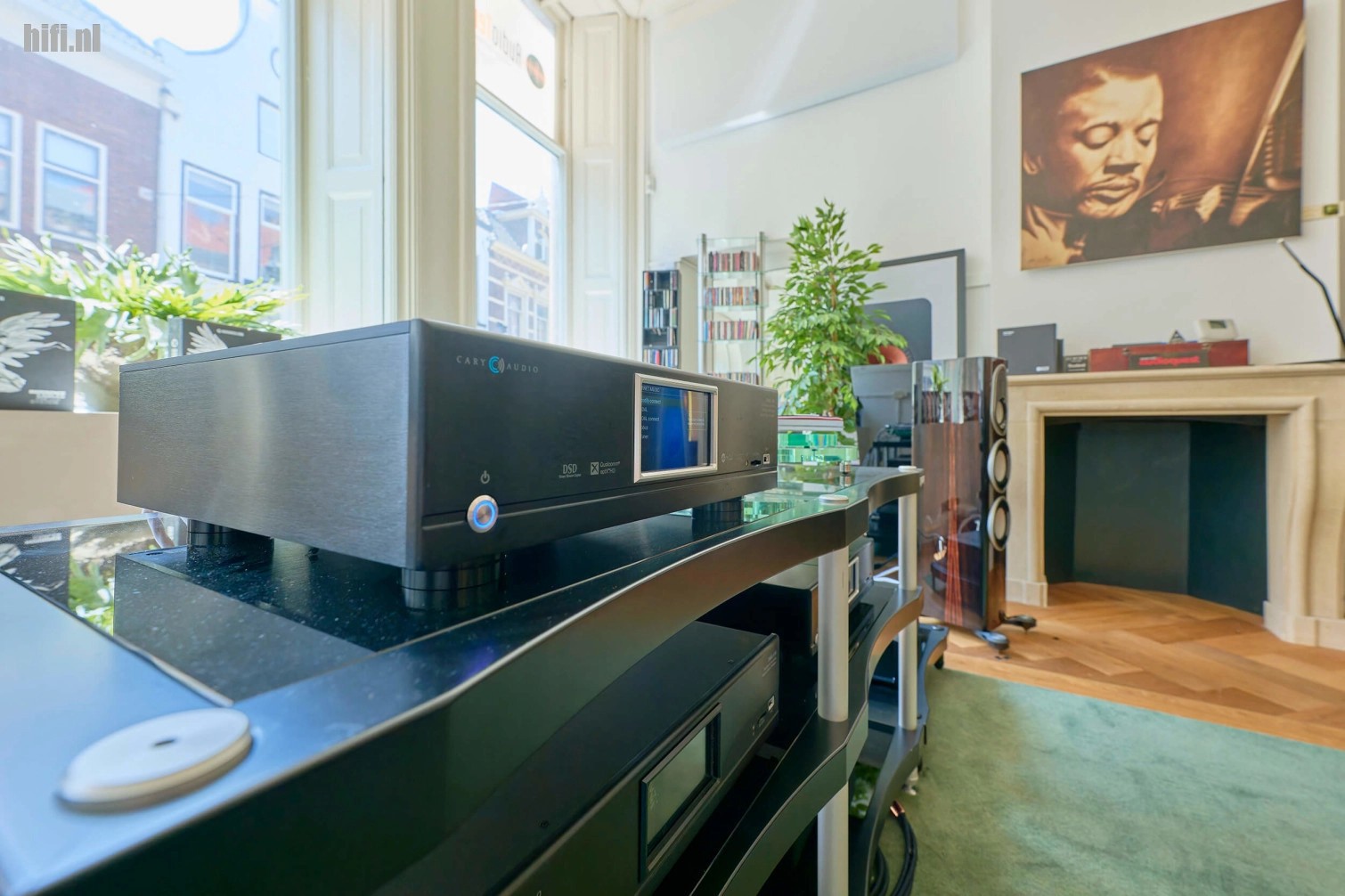Since 1999, Hifi.nl has been an important website for hi-fi news, reviews and features in Dutch. Readers in the Benelux are well aware of their efforts to bring independent journalism to the Dutch-speaking part of Europe. Recently, hifi.nl reviewed Cary Audio’s current line-up of network players/streamers, which makes for an interesting comparison between products from the same manufacturer, but at quite different price points.
Werner Ero is a freelance journalist and photographer who writes for hifi.nl and Music Emotion magazine. His original Dutch review of the Cary Audio DMS-650, DMS-750 and DMS-800 PV streamers is available online here.
For the benefit of a non-Dutch speaking audience, we have decided to translate some excerpts from Werner Ero’s review. Please note that the translation was first done with the DeepL machine translation engine, then abridged and edited. Photography by hifi.nl.
Not so long ago, Cor van Empel of importer ERCT asked me if I would be interested in testing three new audio network players. Although I think this market is pretty much saturated by now, I said “yes” out of curiosity. A decision that certainly has something to do with the fact that I know Cor from a number of other fine brands and know that he has a fine nose for fine and often unorthodox audio products. The three source components under review here are from the US brand Cary Audio, founded in 1989: the DMS-650, 700 and 800 PV audio network players.
Cary Audio is a relatively unknown name for the Dutch market, but a major player worldwide. Cary is known for its beautiful, musical sounding designs. Products that put enjoyment before audiophilia, made for the true music lover.
DMS-650
The DMS-650 is not only the most affordable model, but also the latest product in their DMS platform. Although it replaces its predecessor, the DMS-550, the manufacturer claims that it outperforms the previous flagship, the DMS-600, in every way.
In addition to the album cover, the colour display also shows all the other meta-information about the music that is being played. OK, you can only really read it at close quarters, but it’s all there.
DMS-650: Technology
Although I would prefer to delve into the music and sound features right now, it is also good to know what the DMS-650 can do. And for the price, it can do a lot. For example, this audio network player is capable of native 32-bit / 768 kHz PCM and DSD 512 playback, and is also Roon Ready and MQA certified. Like the other products in the DMS range, the DMS-650 can stream from the built-in TIDAL, Qobuz, Spotify, Spotify Connect and vTuner apps. You can also easily select and play files stored on a network computer or NAS drive.
As if that were not enough, the unit also has three (!) USB-A ports for listening to connected USB hard drives, flash drives and even an SD card. For added convenience, the DMS-650 also has aptX HD input and output (output for Bluetooth speakers or headphones) and Airplay. But that’s not all. Other features include Ethernet or Wi-Fi connectivity, TruBit 7-step selectable PCM upsampling up to 768 kHz and selectable PCM to DSD conversion with selectable 3-step DSD upsampling. Digital inputs include coaxial (x2), optical (x1) and AES/EBU (x1), as well as coaxial and optical digital outputs. Finally, on the analogue side, there are RCA and XLR outputs on board, the latter of which are fully balanced. There is also OSO re-clocking, MU-MIMO Wi-Fi and a full 3-volt output with variable volume control for direct connection to an outboard amplifier.
Cary Audio App
Finally, a fun and very useful addition is the Cary Audio App. This is a universal app that can be used on all three models, and its visual design mimics the looks of the brushed aluminium front panel. At first glance it seems rather basic, but you soon realise that it allows you to control all(!) of the unit’s functions very easily. In fact, it is so smooth and easy that I see this software as an example for many other manufacturers. Even the streaming part can be controlled with it so smoothly that you may even forget to invest in the expensive Roon software.
But now to what you buy such an audio network player for: listening to your favourite music. The first question I ask myself is whether this entry into the world of Cary Audio really adds anything to the huge range of streamers and network players available today. Fortunately, the answer is a resounding ‘yes’, which comes as quite a surprise to me. Not that I didn’t think this was going to be a mediocre machine. It’s just that I’d never tried a product from this manufacturer before, so I didn’t know what they were capable of. After a smooth installation (all three units come with a luxurious and comprehensive remote control). I set to work.
Although I used several other amplifiers and speakers during the test, the three network players were connected to my Zanden 6000 tube amp and Master Contemporary C speakers for most of the time. The main reason for this is that it is the easiest way for me to hear any differences. For cabling I usually use a varying cocktail of AudioQuest, Siltech, Nirvana Audio, Kemp Elektronik and Essential Audio Tools sets, depending on the situation.
DMS-650: Listening
The first thing I noticed after pressing ‘play’ on the DMS-650 was the sheer effortlessness and joy with which this network player ‘tackles’ music. In fact, it sounds so casually good that I immediately became curious about the other two more expensive models. But first let me describe the wonderfully spontaneous and catchy music rendition of this relatively inexpensive American streamer.
Of course, this is not an analogue turntable or tape recorder in the technical sense, but the first thing that comes to mind is the spontaneity and catchiness usually reserved for top-of-the-range analogue sources. To illustrate this, I will start with Nenad Vasilic’s wonderful solo album Bass Room. He is an Austrian jazz musician of Serbian origin who grew up with the rich folklore tradition of the Balkans. On Bass Room he plays mostly his own compositions on the double bass, and we get an intimate look at what is possible with this instrument, so fundamental to acoustic music.
Beautifully organised features
The recording of this album, which will be released in 2019, is very well done. It allows you to see the differences between the digital players. Although I find the whole album worthwhile, I start with the versatile Gavrilo’s Principle. This track features percussive accents alongside a flexible and tight double bass. Through the DMS-650 the instrument sounds beautifully honest and believable, striking the right combination of richness, plasticity and nimbleness.
It plays so well that I enjoyed listening to the whole album in one session. In the song Kradem ti se u veceri Nenad plays the bow and it is, if possible, even more pleasant. I can’t really make any serious criticism of this unit, especially at this price. In the (much) higher price ranges there is still room for improvement. But you have to have a very high-end system to hear this.
I played many other albums, of course, but they all gave the same picture. A picture of a perfect, seamlessly assembled whole, where the precarious balance between coherence, musical enjoyment, resolution and dynamic drive has been very well sought. The 3D spatial image is well defined, providing the canvas on which everything else is placed.
DMS-700
The DMS-700 is a step up in price and design. I was curious to see what Cary Audio had done to improve on the very good DMS-650. Here’s what they had to say about the new model:
“When we set out to design the DMS-600, our goal was simple. To make the absolutely best sounding network audio streamer on the planet, far exceeding its price point and beyond, period. As evident by the following the DMS-600 garnered, it’s clear we achieved that goal in spades! In addition to sounding amazing, the DMS-600, like all DMS products, functioned robustly, was feature packed, stable, operated easily, and had the best display screen in the industry. So, how does one top that? It was not easy, but the efforts have paid off”.
“Prior to the DMS-700, all DMS products used a voltage output DAC chip(s). The new DMS-700 uses AKM’s latest flagship DAC, the AK4499EQ. The AK4499EQ uses a switched resistor architecture with current output. This alone required a complete rethink of the DMS digital circuitry. The switched resistor architecture can sound much more analog like while revealing copious amounts of detail yet retaining a very natural, smooth, and musical response. This type of DAC is more complex to integrate but the rewards can be significant with proper implementation. As such, we also incorporated a FPGA chip that works in conjunction with the switched resistor DAC resulting in an extremely coherent and smooth sound. Of course, the digital circuitry alone does not account for the overall sound. Cary Audio is renowned for designing spectacularly musical analog circuits. Rather than using a simple analog buffer stage post DAC chip, we designed a full no compromise in-house analog stage coupled to massive power supplies for both the digital and analog stages. Any DAC audio component is a sum of its parts. As important as the DAC chips themselves are, it’s the designed pre and post DAC chip that gives our Cary Audio DMS products their famous signature sound”.
DMS-700: Technology
As well as sound, the DMS-700 is packed with new and improved features. These include the ability to create playlists from multiple sources, Pure Audio mode, sleep timer, Crytek oscillator clock, 7 independently controlled power supplies and a new LCD screen with double the resolution of previous DMS models at 1600 x 1200 dpi. Although its dimensions (43.8 cm wide, 9.25 cm high and 41.28 cm deep) and weight of almost 13 kg are identical to those of the DMS-650, the manufacturer has clearly taken a step up in terms of build quality.
The model has a much more ‘high-end’ look, which is reflected in the thicker and separate aluminium top and side panels. The new vibration absorbing feet also contribute to a technically impressive design.
DMS-700: Listening
OK, so the same brand, but ‘only’ one model up the hierarchy? Normally you would expect the same kind of performance, only better. This is not the case here, and I have to agree with what Cary Audio have said when introducing the product. The DMS-700 surprised me from the very first moment. The sound signature changed dramatically The more expensive model is clearly more organic, richer, a little quieter in expression and much more focused on immersing you in the depths of the music. It is wonderfully relaxed and more of a channel for emotions and subtleties than the boldly expressive DMS-650. These are also the qualities I usually find in other (very) expensive top-end streamers. Not exactly a trade-off but I may say a change of accent from joie de vivre and expressiveness to a more filling, fluid and contemplative experience. So when I start playing Nenad Vasilic’s Bass Room again, I immediately hear a more mature playing.
The youthful zest has given way to reflection, and the depth of his playing is even more impressive. Another delightful album is Friedemann The Concert. A unified ensemble led by German guitarist, multi-instrumentalist, lyricist and producer Friedemann Witecka. You can put a lot of labels on it, like “ethnic fusion, neo-classical or even new age”. But I prefer to describe it as very fine instrumental listening music. It has jazz and world influences, but above all it is full of exciting musical turns, recurring influences, but above all it is full of variety.
Emotional charge
I began my musical trip with the beautiful song Six Baguettes, in which marimba player Emmanuel Séjourné interacts delightfully with the audience. While the DMS-650 is more concerned with ambience and transient reproduction, the DMS-700’s different perspective focuses more on the supernatural timbres, timbres and emotional charge of the music. This makes the balance a little rounder and, of course, more forgiving which may benefit some setups and be less fitting to others.
The next track from the same album is ‘Memories of Lugnasad’, and here the whole five-piece ensemble play together with energy to reach great musical heights. Here the DMS-700 is wonderfully relaxed and, even more than its little brother, at the service of the music. It will be interesting to see which direction the top model will take…
DMS-800 PV (Professional Version)
As soon as the Cary Audio designers had finished the DMS-700 design, the challenge of creating a version of the DMS platform that could compete with the best in digital source category began. After much research and trial and error, the DMS-800 Professional Version (PV) was born. DMS-800, in fact, is more like a limited edition ‘hot rod’ version. This is also reflected in the price, which is almost double that of the DMS-700 minus a thousand euros! “While they (DMS-700 and DMS-800PV) have the same sonic signature, the DMS-800 unfolds the music before you to immerse you in it completely with all the natural texture and expression of the actual performance, space, instrumentation, and vocals. A truer experience of musical wonder…”
Says the manufacturer. To achieve this, the DMS-800 PV is a dual mono design, doubling virtually everything in the DMS-700. While the latter uses a single digital/analogue PCB with a single current output switched resistor and 4-channel AK4499EQ DAC (equivalent of 4 DACs), the DMS-800 PV uses separate digital/analogue PCBs for the right and left channels. Each of these PCBs thereby has its own 4-channel current output switched resistor AK4499EQ DAC for a total of 8 individual DAC channels. A truly fully balanced dual differential circuit with multibit R2R D/A-conversion.
DMS-800PV also includes a Crystek Oscillator Clock, two separate DSP driver stages, 14 groups of independently regulated power supplies and two independent groups of analogue stage regulation power supplies, as well as other improvements. It has an even larger high-resolution 5-inch screen and slightly taller housing than the other DMS models. (10.8 cm high, 43.8 cm wide, 41.28 cm deep). The weight is even heavier at just under 18 kg.
DMS-800PV: Listening
Before writing this I just had to ask myself what I actually expect from the sound of this high end network player. If I wanted to oversimplify I would have said that it should combine the strengths of both less expensive models in one design. But that’s won’t be true since the DMS-800PV is build up from the framework of DMS-700 and not the DMS-650. Okay? so the answer then will be that it has the sound of the DMS-700 but even better? Yes and no. It’s certainly true that this top-of-the-range model shares some features with DMS-700. But that is where any comparison ends. Mainly because with the top model we really do move on to a much more advanced performance.
The sound qualities of DMS-700 which I so much appreciated have now been fleshed out in other ways. Add to this a wonderfully panoramic 3D stereo image and all the “analogue” glow, focus and grandeur you can think of and you slowly get an idea at where it goes.
Music
With their album The King of Mont Ventoux, from the film of the same name, the Dutch Nits have delivered another abstract masterpiece. Unfortunately, the album has a remarkably short playing time, and you really need a playback setup that can keep up. But if that is the case, the DMS-800 PV allows you to immerse yourself in a kaleidoscopic delusion that is both exciting and sounds remarkably good. Finally, when I really start to push the boundaries, I usually end up with Misha Alperin’s album Night on the famous ECM label.
“Night is a recording of the group’s very first performance at the VossaJazz Festival in Norway in 1998. Misha Alperin, who was commissioned to write for VossaJazz, was determined to go against the prevailing bombastic trends at festivals. The music of ‘Night’, a suite composed by Alperin, is often of an intense calm, with silences used to great effect. But the song Heavy Hour, in particular, defies almost everything that can be recorded in terms of dynamics in digital files. It is hugely theatrical, with popping timpani and banging drums that will give any listener who is open to it absolute goosebumps. The Cary Audio DMS-800 PV lives up to its status as a brand leader, reproducing every nuance, timbre and dynamic eruption with verve. Finally, the 3D spatial image is beautifully layered, making this audio network player a tough nut for the competition to crack. Wonderful and beautifully balanced.
Conclusion
Three audio network players in as many different price ranges, but remarkably different in terms of content. In fact, I have two favourites myself. The first is the entry-level DMS-650 because of its amazing price/quality ratio, refined technical package and wonderfully easy listening experience. This is simply a very powerful product that could make things quite difficult for the competition. The other unit I admire is the top-of-the-range DMS-800 PV model. Beautifully built, both internally and externally, it also feels right at home in a truly top-class high-end system.
Playback is downright grand. It never feels over the top or bloated. The low-level information processing is particularly good, but as it should be, it is part of the big picture. The DMS-700, which hasn’t been mentioned here yet, is also fine and high-end in terms of quality, but also falls a bit between two stools as far as I’m concerned. It lacks the nimbleness of the DMS-650 and the power of the DMS-800 PV. What it does have, however, is timbre. This, together with its natural fill, smoothness, quietness and balance, makes it a good choice for listeners who still find digital sounding thin and somewhat soulless. In short, there is something for everyone in this compelling comparison!

